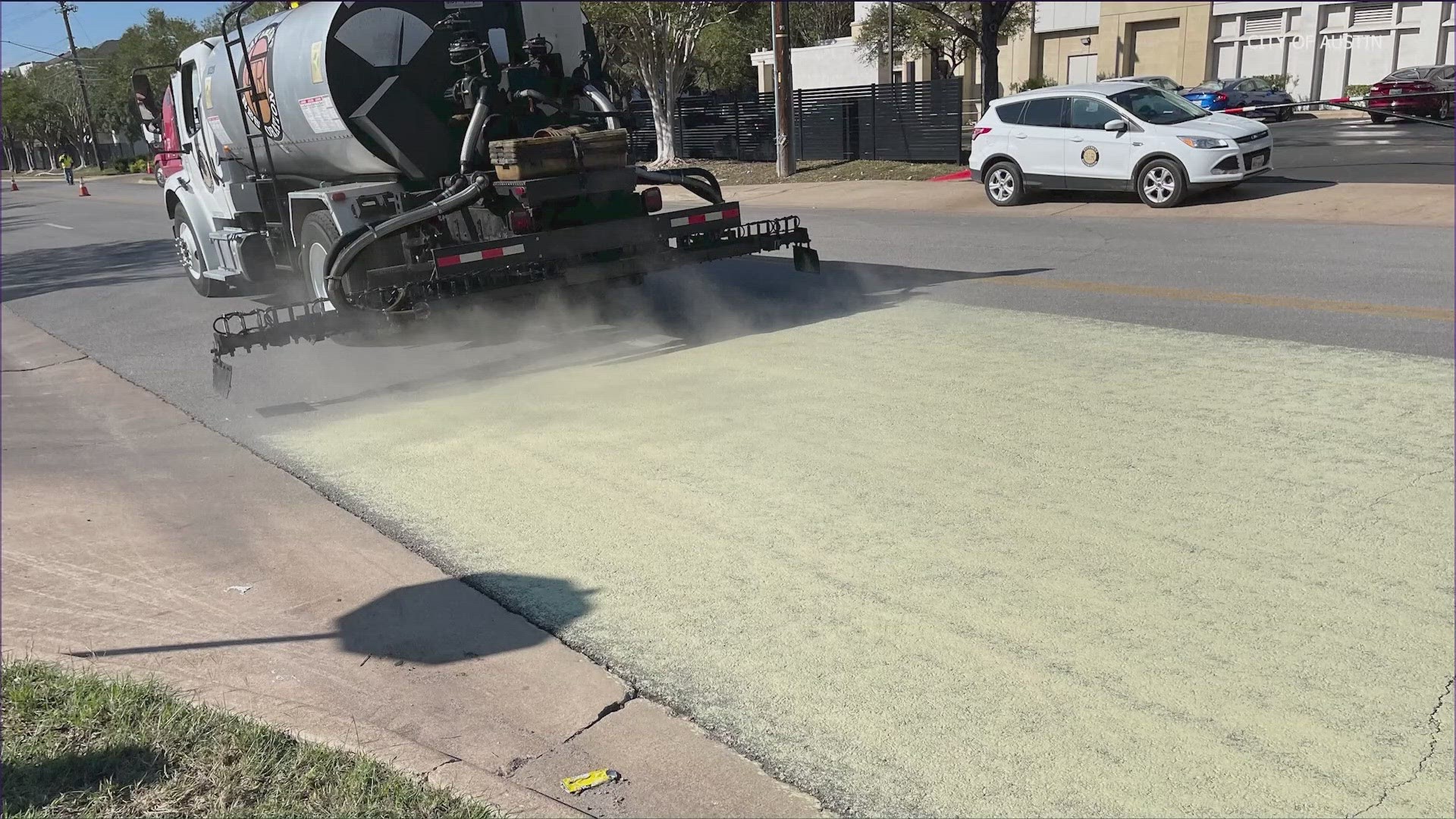AUSTIN, Texas — In an effort to curb the urban heat island effect, crews with the City of Austin have begun testing new "cool pavement" technology.
Engineers are exploring ways to use the material to see if it will keep roadways in good condition and possibly reduce temperatures across the city.
This effort is being done through Austin's Transportation and Public Works Department.
As part of the pilot program, the City put down nearly a mile's worth of "cool pavement" along Meinardus Drive near Franklin Park on Thursday.
Angela Johnson, a city engineer working on the projects, described the substance as a liquid treatment that makes the asphalt lighter in color.
The goal is to mitigate the urban heat island effect, where pavement, buildings and other surfaces absorb and retain heat.
Johnson said the liquid creates a reflective surface that absorbs less heat and helps decrease temperatures, sometimes by as much as 15 degrees, making the area more comfortable for people.
The technology can also help protect roads from cracking.
“Over time with oxidation, the sun, the asphalt itself becomes brittle. So this treatment prolongs [a] pavement surface['s] lifetime," Johnson said.
The City is working with the University of Texas at Austin to study the effects of "cool pavement." Johnson believes the City could use this technology on more roadways in Austin in the future.
The pilot program is costing the City around $17,000.

